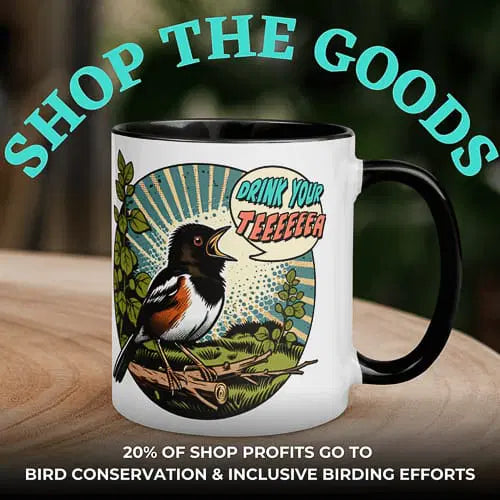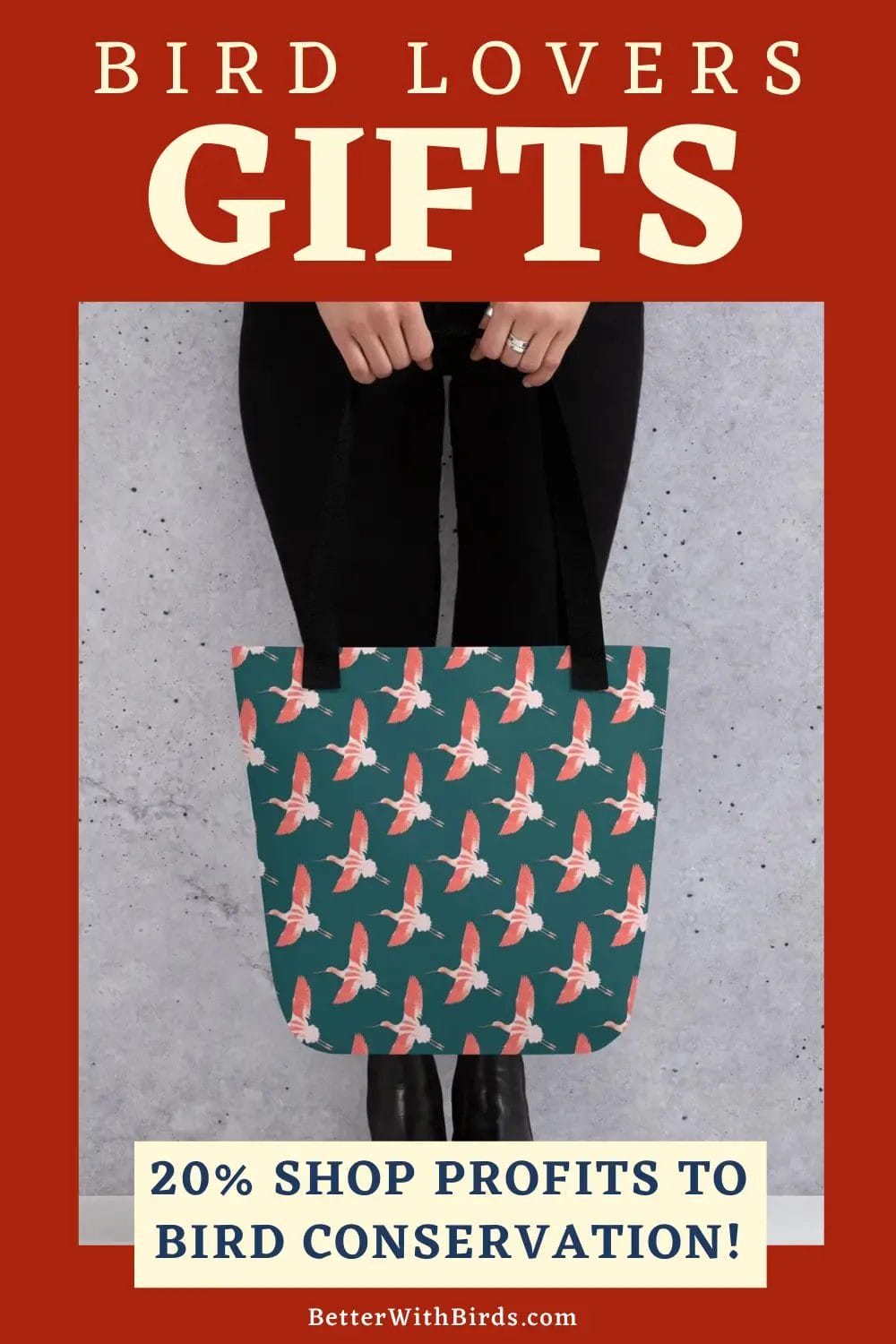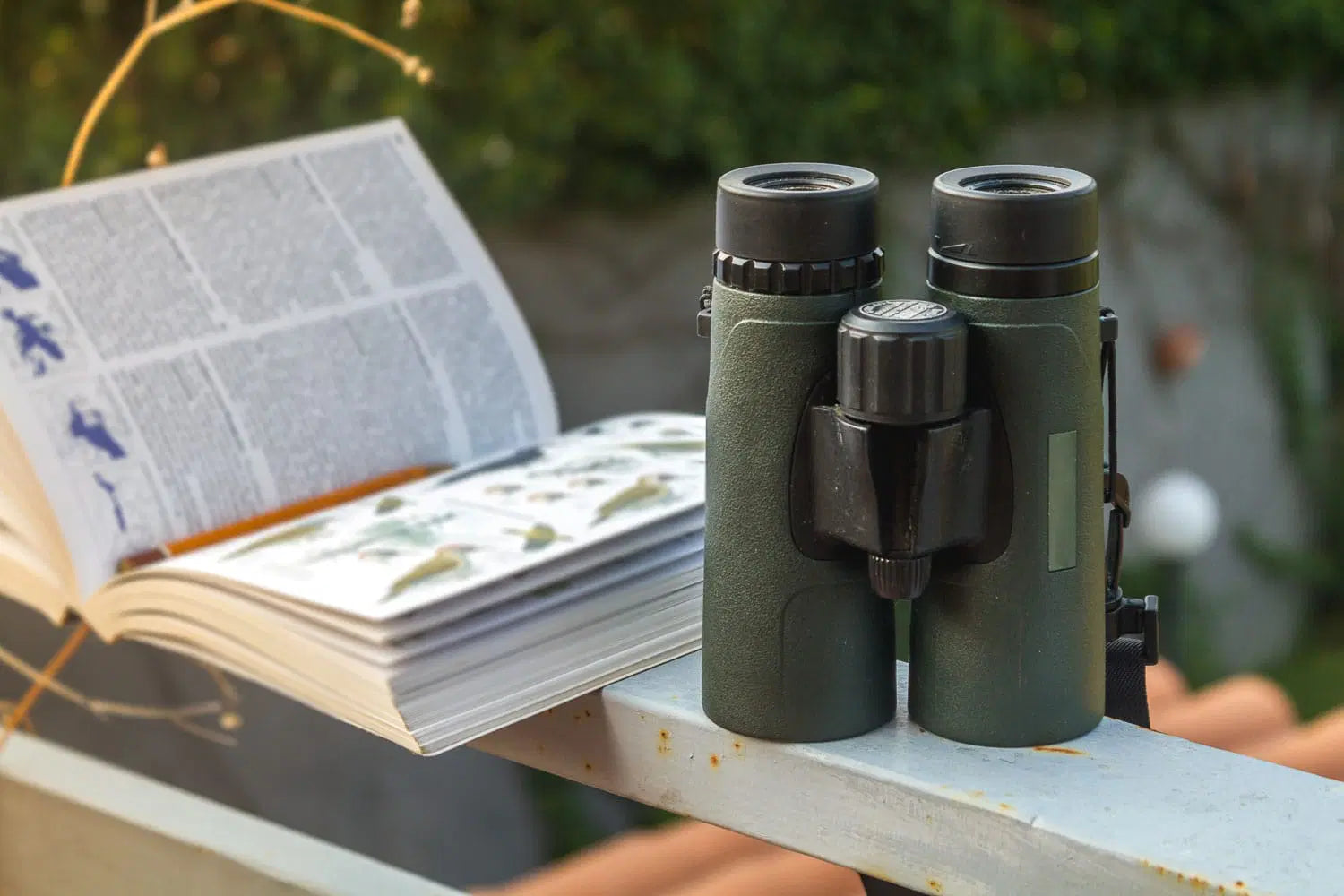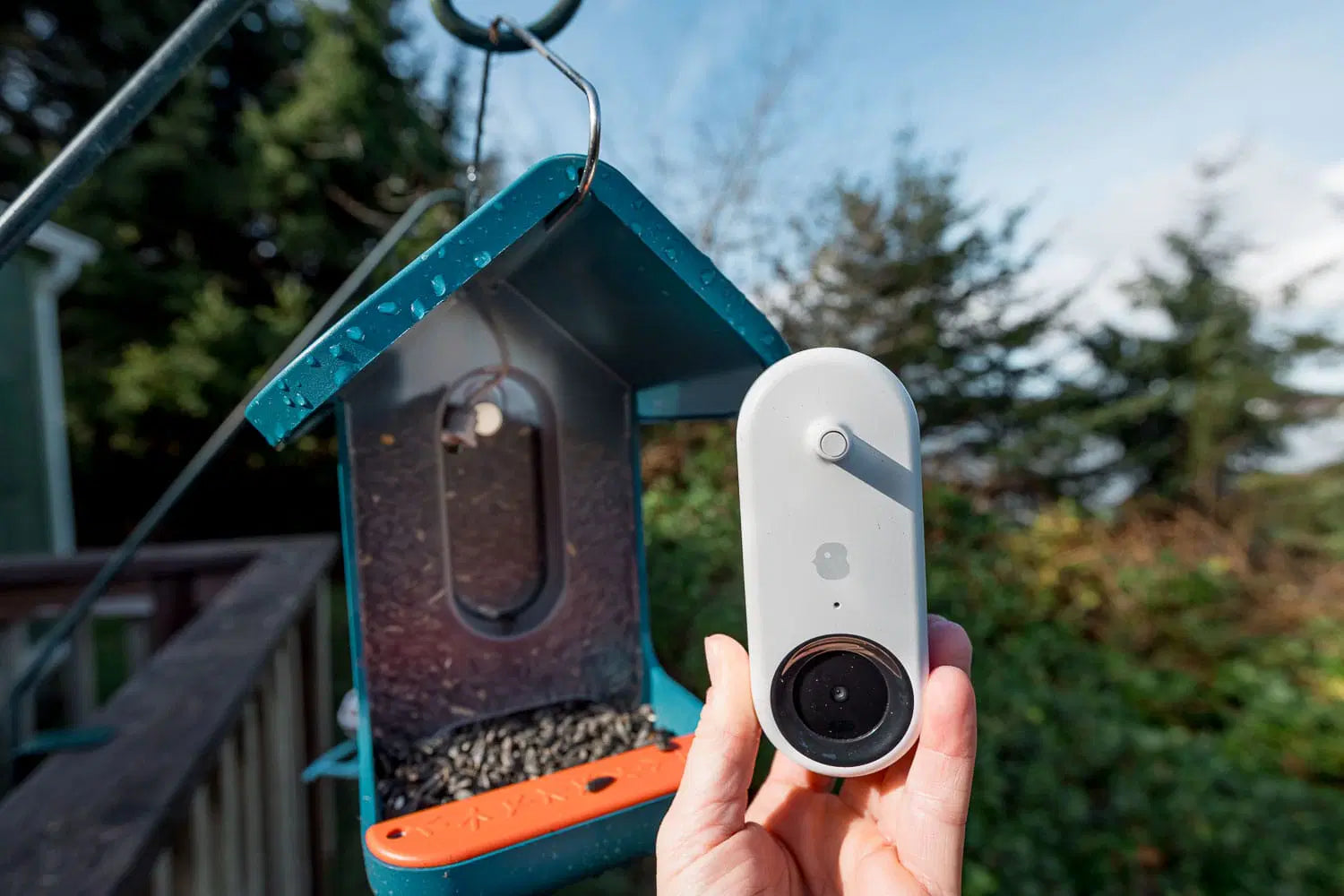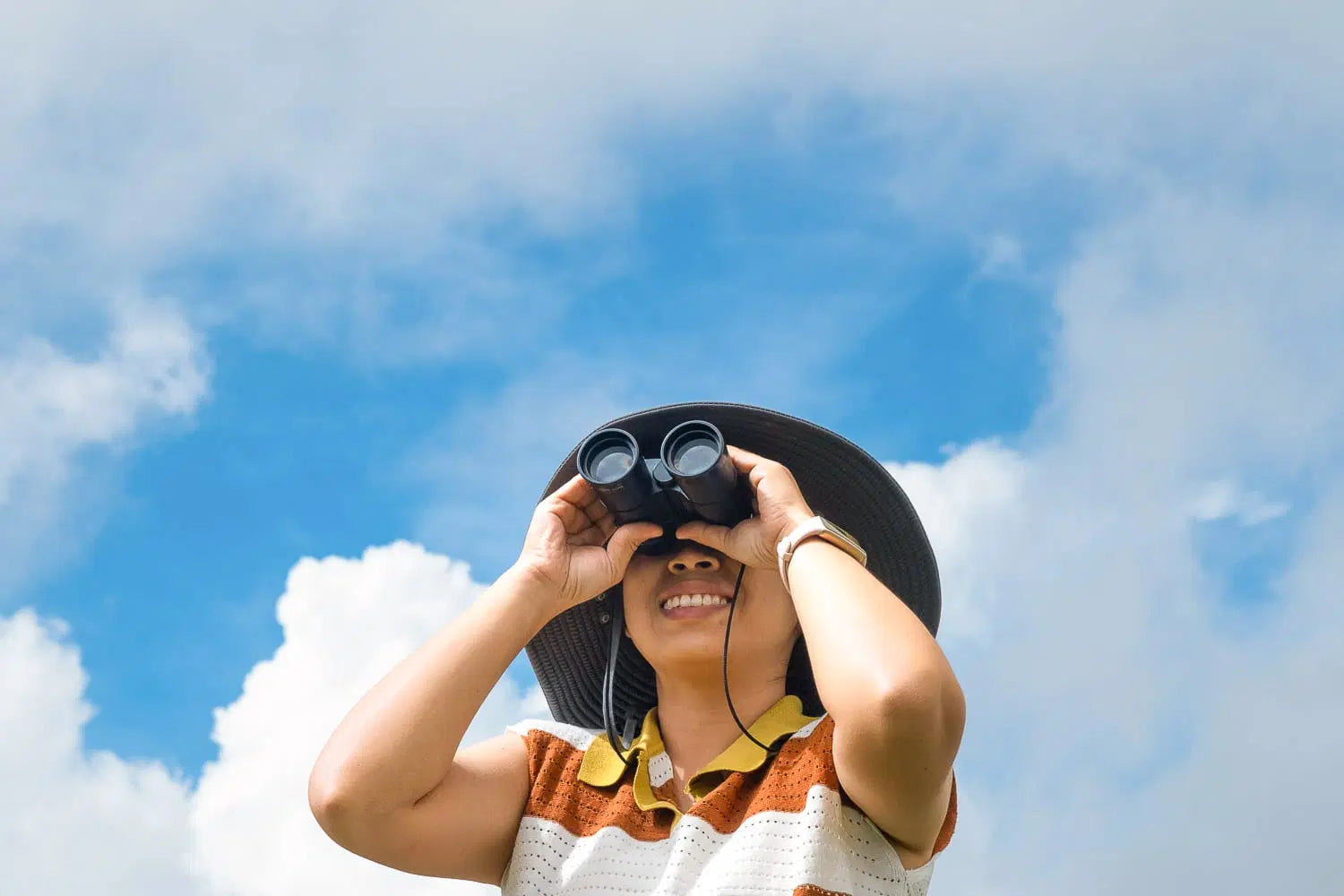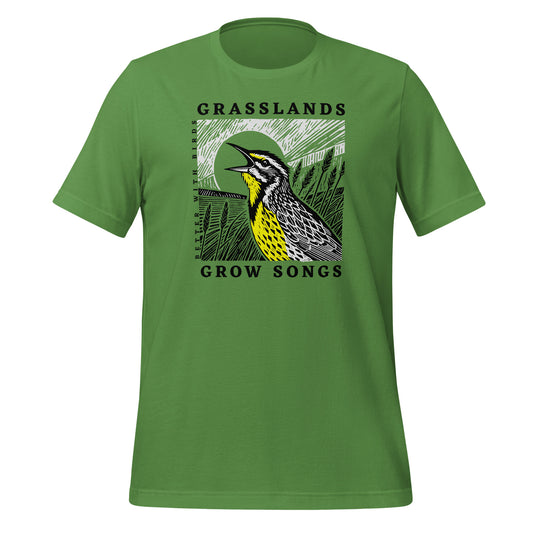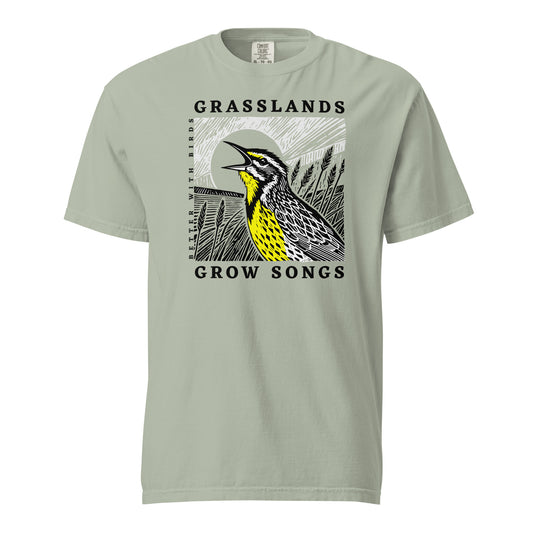How to Choose Binoculars for Birding
Feature photo: Aoy_Charin/Shutterstock
Read Time: 5 minutes
Birding Gear , Binoculars & Scopes
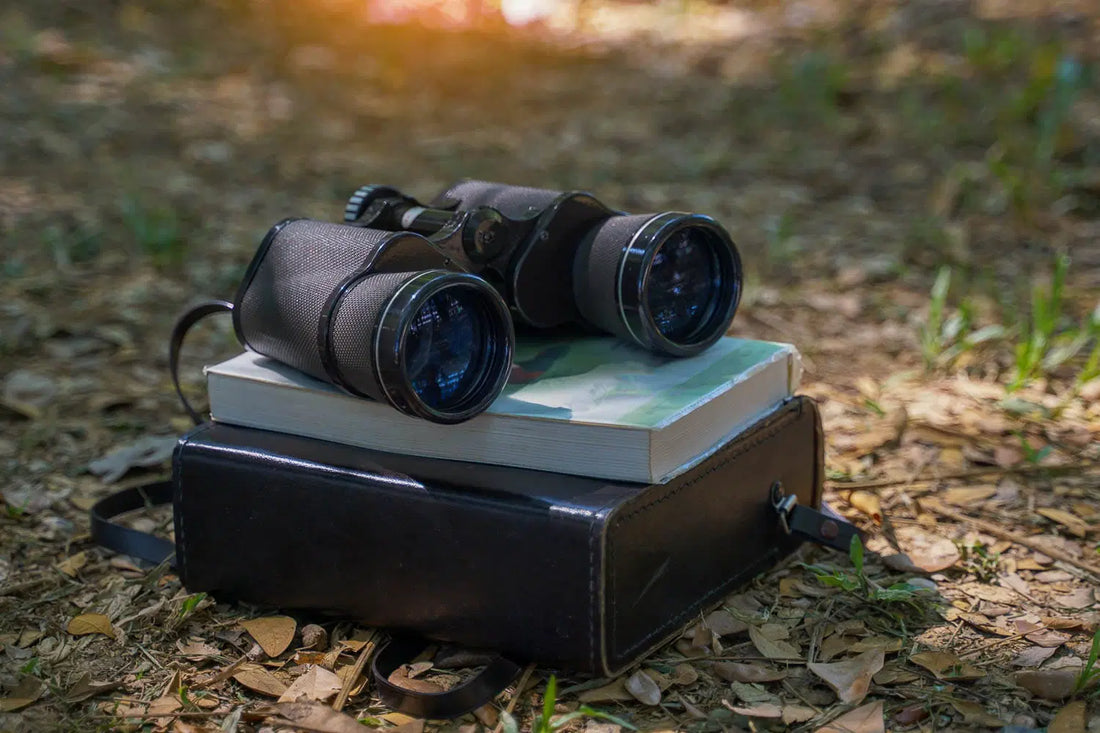
This post contains affiliate links. If you use these links to buy something, we may earn a commission at no additional cost to you. We only recommend products we fully support or use ourselves. Our full disclaimer
PIN THIS FOR LATER
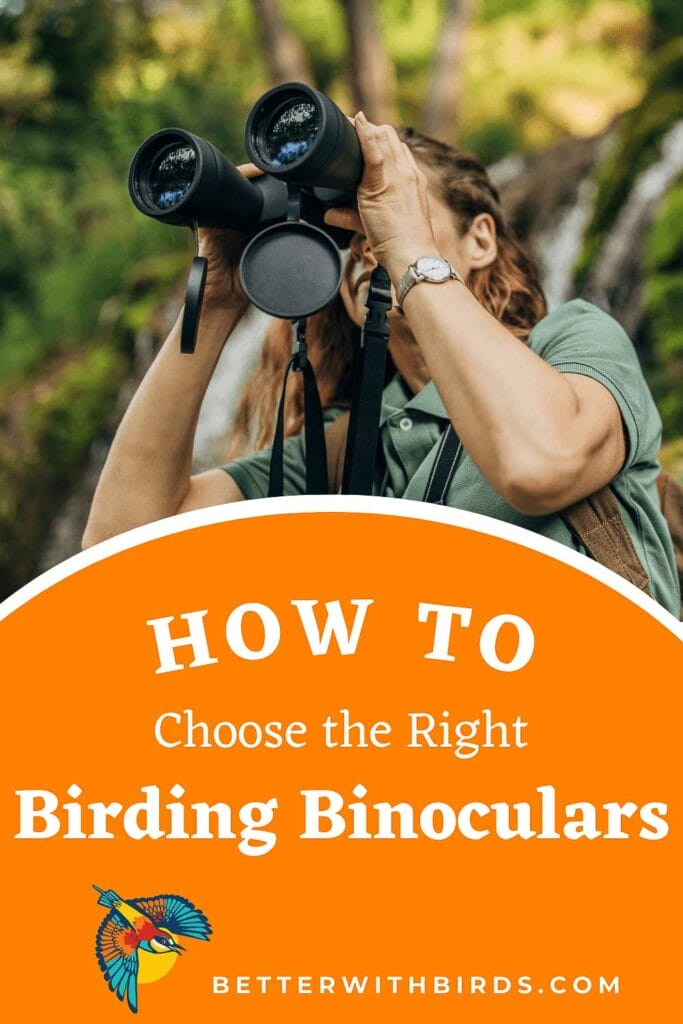
For birders, binoculars are key to the experience. They bring the vibrant details, rich colors and intricate patterns and fascinating behaviors of birds into view.
If I’m out and about without my binoculars and see something in the distance, I automatically put my hands to my chest to reach for them and when they’re not there – well, at least my hands are already there to hold my heart as it breaks!
With so many binocular options though, buying binoculars for birding can be, like, a lot. Folks will often pick up any ol’ pair because the anticipation of getting started is just too much to bear.
But, with a little research – and a little guidance – you can get started with a pair that’ll have you easily scopin’ the bird scene for decades.

Photo: Alberto Masnovo/Shutterstock
A closer look (wink, wink) at binoculars
Before we dive into the particulars of birding binoculars, let’s take a moment to understand the mechanics behind binoculars. Binoculars are made up of two, well, telescopes attached side-by-side. Each has an objective lens at the front end, an ocular lens at the back end, and a prism system within each barrel.
The objective lenses gather and focus light from the scene. That light then moves through the prism system which corrects the orientation of the image and directs it to the eyepiece.
Depending on the binoculars, they’ll have either a Porro prism or a roof prism.
Porro prism binoculars use a zigzag configuration to achieve image inversion and reversion, while a roof prism straightens out the light path within a more streamlined design.
Most binoculars with a Porro prism configuration tend to cost less, but are typically bulkier.
Depending on the type of birding you’re doing, that extra bulk and weight may not be much of a concern to you.
And, depending on your money situation (that’s none of my business!), budget may or may not matter to you.
We give 20% of all shop profits to bird conservation & inclusive birding efforts.

Photo: Sophon Nawit/Shutterstock
Birding binocular factors
When it comes to the best binoculars for birding you’re going to want ones that – at a minimum – provide clear and bright images, a wide enough field of view to fully capture the scene, are easy to handle and manipulate, and offer a comfortable viewing experience.
Keep the following key criteria in mind:
Magnification and objective lens diameter
Binocular descriptions typically include two numbers (e.g., 8×42). These numbers represent magnification – the first and smaller number – and the objective lens diameter – the second and larger number.
Magnification tells you how much the image is magnified and the objective lens diameter tells you how much light the binoculars can gather.
Opt for binoculars with moderate magnification (around 8x to 10x) and a larger objective lens size (around 42mm) for a good balance between zoom and field of view. This combination allows you to observe birds in detail without sacrificing brightness and clarity.
Field of view
A wide field of view is crucial for bird watching as it allows you to scan and track birds comfortably. The field of view is determined by the level of magnification and the objective lens size and is represented in feet (or meters) per 1000 yds (or meters).
Look for binoculars with a field of view – at the absolute very least – of 300 feet (the higher, the better) to capture more of the surrounding area and spot birds quickly.
The field of view is also represented as the ‘angle of view’ which is just the field of view given in degrees – so the angle of the view you’re getting.
Close focus distance
Minimum focus distance or close focus refers to the shortest distance at which a pair of binoculars can clearly focus on something.
For birders, this is actually pretty important!
While it’s true that the main goal of binoculars is to see what’s far off, there are also situations where we want to see more detail of something not too far from us so we can get the full birding experience.
For birding, look for binoculars with a close focus of, at a bare minimum 10 feet, though 6-8 feet is ideal.
Keep in mind, though, that with higher magnification comes a higher (so farther) close focus distance.
Optical quality
It seems sort of silly that I’m just now getting to optical quality, considering it’s sort of the point of binoculars. But, we had to get through the numbers first!
You want binoculars that show you bright, clear views with accurate color representation even in poor light.
For that, you’ll want binoculars with high-quality optics.
The glass quality itself has the most impact on optics, but it can be further improved with coatings that can improve light transmission, decrease reflections and glare, and provide more accurate color rendition on top of also protecting the glass itself.
For the most protection and best optical quality, broadband fully multi-coated is where it’s at, but fully multi-coated or even multi-coated is better than nothing.
If you’re using roof prism binoculars, look for those that use a phase-correcting coating that accounts for travel speed differences (or the “phase shift”) between the two beams of light.
Focusing
Most pairs of binoculars have a central focusing wheel, which allows for the simultaneous adjustment of both barrels to achieve a harmonious focus. Ohmmmmmm.
Some binoculars will also use diopter adjustment rings for fine-tuning of the focus for each eye.
Keep in mind that the diopter adjustment is an individual-specific setting and does not need frequent readjustment unless your eyesight changes.
Comfort and ergonomics
With binoculars it’s not just about the view, but how comfortable they are to use. This is determined by factors like their size, the tactile-ness of the focus wheel, the comfort and adjustability of the eye cups, and having a hinge that comfortably adjusts to your facial features and vision.
Choose binoculars that are lightweight enough for you to bring them along on your birding adventures. Even if those adventures are at your dining table looking out the window at your bird feeders, still make sure the weight is one that you’re comfortable holding.
If you wear glasses, make sure your binoculars work with your glasses. Even if you don’t wear glasses right now, you may someday and if you go with the right pair of binoculars, chances are you’ll still be using them if your vision declines (I know! That’s a bummer to think about, but it’s the truth).
For glasses, you’ll want binoculars with eye relief of at least 15 mm.
Durability and weather resistance
Birdwatching often involves outdoor adventures in who knows(!) what type of weather conditions. Opt for binoculars that are waterproof and durable enough to withstand rough handling and potential tumbles.
In addition to being durable and waterproof, you’ll also want binoculars that are fog-proof. These types of binoculars, often described as “nitrogen purged,” are filled with nitrogen (and/or argon in some cases) to keep moisture out of the tubes.
For more information on binocular specs, check out our article here that breaks down what all the numbers mean.
In Our Shop
We give 20% of all shop profits to bird conservation & inclusive birding efforts.

Photo: f.t.Photographer/Shutterstock
How to pick the right birding binoculars for you
Choosing the right pair of birding binoculars really comes down to understanding your personal birding habits and preferences.
You’ve got the technical specs down—magnification, lens diameter, field of view; now it’s about matching those specs to your bird watching style so that you buy binoculars that support your interests.
Are you the kind of person who enjoys long, rugged hikes to a birding location or do you prefer the comfort of your own backyard bird feeders?
If you’re traversing varied environments, durability, portability, and weather resistance are key.
Love getting up close and personal with birds in your own backyard? Make sure the close focus distance is on the shorter side.
Also, think about the times of day you’re most likely to be bird watching. Early birds and night owls need binoculars with larger objective lenses to catch those low-light scenes.
And don’t forget about comfort—it’s vital. You’re going to be holding these binoculars up to your eyes for extended periods, so weight and ergonomic design really matter.
Remember, the best binoculars are the ones that you’ll actually use. That means they fit your face comfortably, don’t weigh you down, and capture the beauty of birds in such detail that you crave looking through the lenses.
Testing binoculars is the best way to help figure out the right pair for you.
Test out as many binoculars as you can and take your time to find a pair that feels like an extension of your natural sight.
And if you’re wondering where in the world to start, here’s our top picks for every budget







